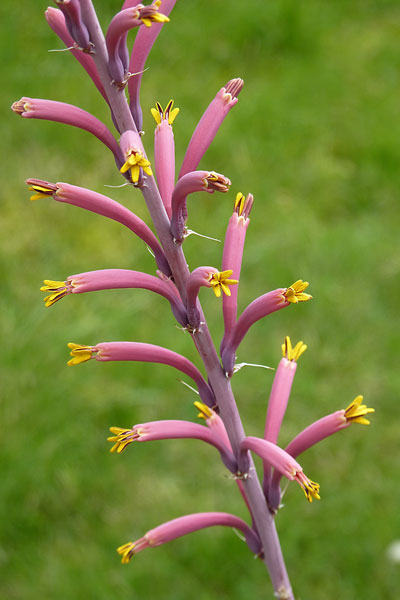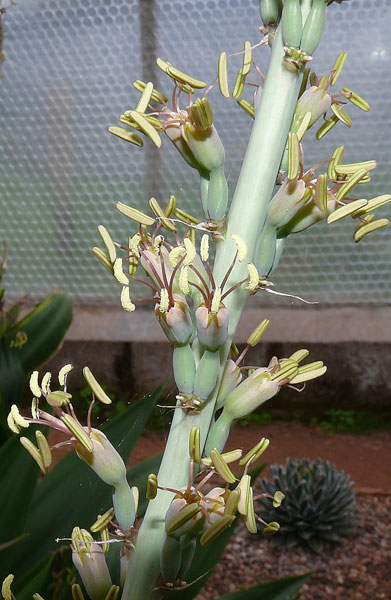Can you tell them apart?

These two small Agave species will never outgrow a 15cm-20cm pot. The two in the photos are planted in the ground, but this has not encouraged them to grow any bigger, just helped them grow uninterrupted. When it is time to flower they will both need about a metre or two of head room for the flower spike, but there is no rush as this may take up to 10 years or perhaps longer.
Can you say which is which because, until the flower spike emerges and the buds start to develop, they look pretty much the same. The leaf edges are decorated with white filiferous threads; curly on A parviflora and straight on A polyanthiflora (as in Gentry’s* book on Agaves). This does not seem that much of a distinctive trait to identify them for sure. The leaves also display attractive white markings, known as bud printing; that is, as the leaves peel away from the core they retain markings from the leaves growing on either side of them.

Fig. 2
Until I was given a small plant guaranteed to be A parviflora, all the previous plants that flowered for me, named as A parviflora (of which there have been quite a few) turned out to be A polyanthiflora. However my friend was indeed right with his plant because this past year the A parviflora flowered for me and a big Yippee was heard inside the glasshouse.
The flowers are the most striking difference between the two plants. A polyanthiflora has a flower tubes with a length of 37-42mm and a pinkish red flower colour Fig 2.

Fig. 3
The flowers of A parviflora are much shorter in tube length, 13-15mm and pale yellow if any colour at all, or even green Fig 3.
To complicate the two above there is a third one in the group called A parviflora ssp. flexiflora. The flowers are flexed over rather than pointing up, as its subspecies name would suggest.
All of these species can be grown from seed which is available from Mesa Gardens and Rarepalmsseeds.com.
Geoff Bowman
* Agaves of Continental North America – Howard Scott Gentry
Copyright 2013 No part of this article or the accompanying pictures may be reproduced without permission
![]()
